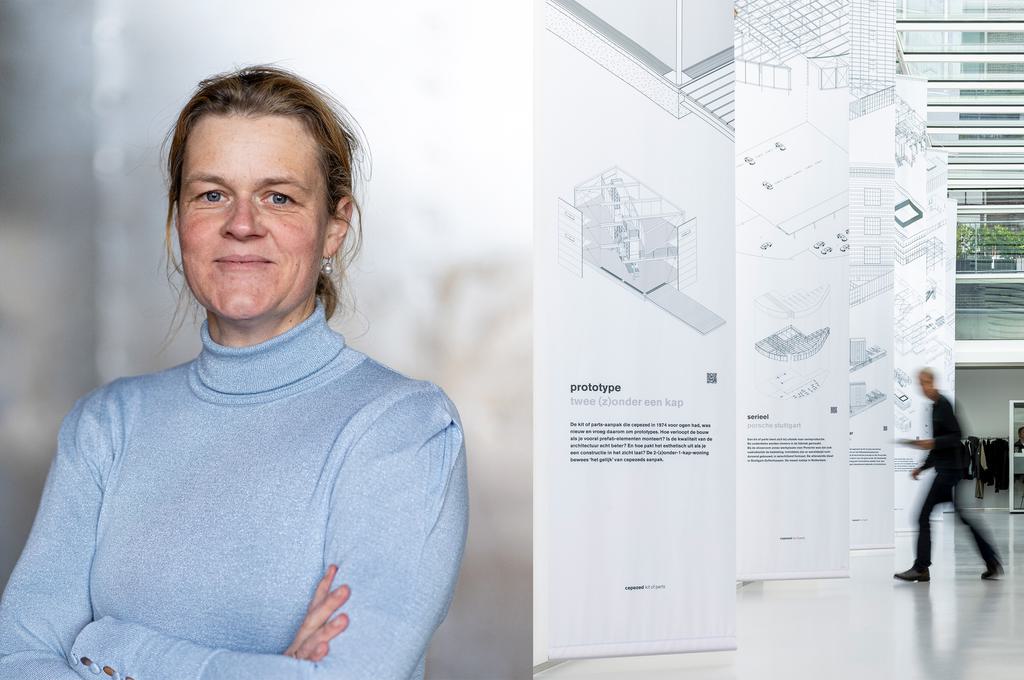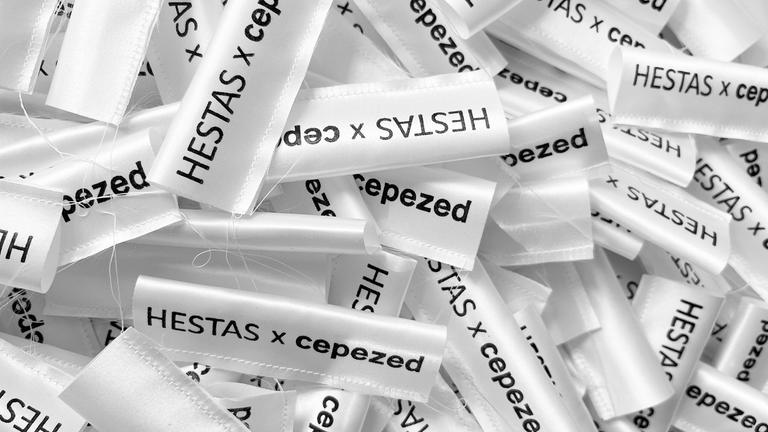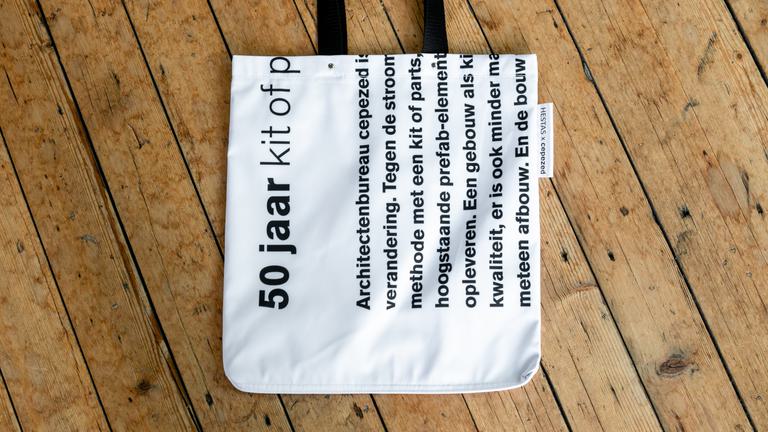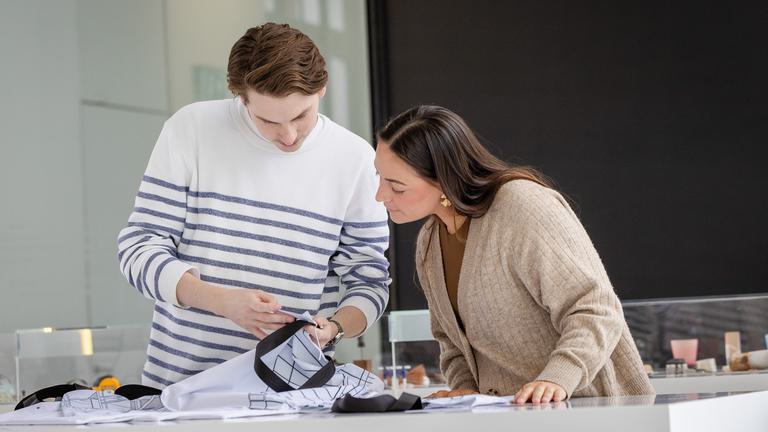For its 50th anniversary in 2024, cepezed made an exhibition, among other things: seven banners showed the evolution of our kit of parts. These banners were not thrown away afterwards, but used to make 200 bags. Hester van der Scheer of HESTAS designed and produced the bags. We asked her what drivers her.
You've been running your company HESTAS for a year now. How do you look back on that year?
My goal was to use waste to make bags and break even financially. I use my earnings for haberdashery, i've invested in an industrial sewing machine and also I need to pay the rent of the space I share in the Delft Kabeldistrict. Finding free waste turned out to be surprisingly easy. If you just make phone calls, and ask around, not everything turns out to be as over-organised as you might think. For instance, Museum Voorlinden gave me their 50-metre-long banner of the Kiefer exhibition, that hang along the highway. It gives an enormous drive when what you try succeeds.
The underlying aim of HESTAS is to spread the word about circularity. Is everyone ready for that?
There is a huge feel-good aspect to circularity, it is a disarming topic of conversation. At the same time, it is a serious necessity. I notice that many companies are working on it, but do not know where to start. The willingness is great when I explain what I am looking for. I notice that, through HESTAS, my own awareness about consumption and waste is growing. Hopefully the same counts for the people I talk to, even if nothing rolls out straight away.
You create designs, operate the sewing machine, make calls and prepared a strategic plan. Does this fit with your background?
I enjoy working with my hands and seeing immediate results from what I make. Besides HESTAS, I work as an executive advisor at a 'waterschap', which is the opposite. I studied urban planning at TU Delft and worked at Adecs, where I set to optimise the decision-making processes. In doing so, I learned the importance of smart trade-offs. A small concession from one person can mean a lot to another. If you do not assume power, but weigh up everyone's interests, one and one add up to three. Basically, it comes down to creating added value together, this is what drives me.
telling a story with circular bags



Is that why you don't call HESTAS' projects collaborations in stead of assignments?
Funny you mention this, it is indeed how I describe it on my website. Collaboration expresses responsibility, I think. Hence the importance of the story. I prefer closed circles, in which I take material from and deliver bags back to the same company, that's the strongest story. Everyone with a cepezed bag is now an ambassador of circularity, insofar as you weren't already. And it really was a collaboration, we decided on matters together, like whether it would be a handbag or a backpack and which handles, rings and staples we would use. We did not use a bright colour on the joint label, like I use to with HESTAS, but black and white, matching cepezed.
At cepezed, we recognise your approach of ‘simply starting of’. Was this recognision mutual?
Haha, of course everyone was furiously opinionated, nevertheless I felt great commitment when I came to show my examples. A little resistance only embellishes the final result. Once we had decided what the bag should look like, I set to work. Exactly two bags fitted in the width of a banner, and because it was triple fabric, I was able to make use of the existing seam and get rid of the new seam nicely. It was my biggest job yet. Pretty exciting, but I found it surprisingly fun. It mattered a lot that I had split up the production, so first I cutted 200 bags cut, then I stamped 200 labels stamped, then I sew 200 seams, and so on, in about six hours per production fase.
Why do you explicitly target the local community with HESTAS?
Circularity requires social connection. With HESTAS, I am building a network in which things can happen from and for each other; the local and regional scale lend themselves best to this. Hence I also joined the Circle Lab, set up by the municipality of Delft and the New Future Lab, to take sustainability further. Without the Circle Lab, I would not have come into contact with cepezed. Helping each other to exist by doing what you're good at, that's how you could summarise the social side of circularity. Besides, it saves on transport costs. And it is fun to make a Delft product. From a banner and old mats from the bouldering hall here in the Kabeldistrict, for instance, I made puff bags.
Can the feel-good aspect of circularity also be a pitfall? Do you have an antenna for greenwashing?
Certainly, dumping your material at HESTAS and then saying it ended up at a good address is out of the question! But if I can return a product so that the story is told, I will gladly lend myself to that.


→ Mail bd@cepezed.nl or call our business development team on +31 (0)15 2150000